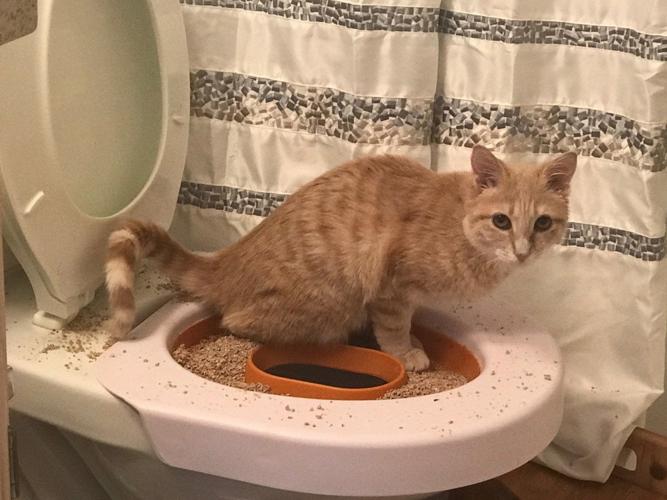Reasons Flushing Cat Poop Down Your Toilet Is Bad - Tips for Correct Disposal
Reasons Flushing Cat Poop Down Your Toilet Is Bad - Tips for Correct Disposal
Blog Article
They are making several great pointers on How to Dispose of Cat Poop and Litter Without Plastic Bags in general in this article in the next paragraphs.

Intro
As feline proprietors, it's essential to bear in mind just how we throw away our feline pals' waste. While it may seem convenient to flush pet cat poop down the toilet, this method can have destructive consequences for both the atmosphere and human health and wellness.
Alternatives to Flushing
The good news is, there are more secure and much more responsible ways to throw away feline poop. Take into consideration the following choices:
1. Scoop and Dispose in Trash
The most usual approach of throwing away pet cat poop is to scoop it right into a naturally degradable bag and throw it in the garbage. Make certain to use a devoted trash inside story and dispose of the waste quickly.
2. Use Biodegradable Litter
Select biodegradable cat trash made from materials such as corn or wheat. These litters are eco-friendly and can be securely disposed of in the trash.
3. Hide in the Yard
If you have a lawn, think about burying cat waste in a designated area far from veggie yards and water sources. Make sure to dig deep adequate to avoid contamination of groundwater.
4. Set Up a Pet Waste Disposal System
Invest in a pet garbage disposal system especially developed for pet cat waste. These systems utilize enzymes to break down the waste, minimizing smell and ecological impact.
Wellness Risks
In addition to ecological worries, flushing feline waste can additionally present wellness dangers to humans. Pet cat feces might consist of Toxoplasma gondii, a bloodsucker that can cause toxoplasmosis-- a possibly extreme health problem, especially for expecting ladies and people with damaged body immune systems.
Environmental Impact
Purging pet cat poop introduces harmful pathogens and parasites right into the water supply, presenting a considerable threat to water ecosystems. These contaminants can adversely affect marine life and concession water high quality.
Verdict
Responsible family pet possession extends beyond providing food and shelter-- it likewise entails correct waste management. By refraining from flushing feline poop down the commode and choosing alternative disposal approaches, we can lessen our environmental footprint and safeguard human wellness.
Why Can’t I Flush Cat Poop?
It Spreads a Parasite
Cats are frequently infected with a parasite called toxoplasma gondii. The parasite causes an infection called toxoplasmosis. It is usually harmless to cats. The parasite only uses cat poop as a host for its eggs. Otherwise, the cat’s immune system usually keeps the infection at low enough levels to maintain its own health. But it does not stop the develop of eggs. These eggs are tiny and surprisingly tough. They may survive for a year before they begin to grow. But that’s the problem.
Our wastewater system is not designed to deal with toxoplasmosis eggs. Instead, most eggs will flush from your toilet into sewers and wastewater management plants. After the sewage is treated for many other harmful things in it, it is typically released into local rivers, lakes, or oceans. Here, the toxoplasmosis eggs can find new hosts, including starfish, crabs, otters, and many other wildlife. For many, this is a significant risk to their health. Toxoplasmosis can also end up infecting water sources that are important for agriculture, which means our deer, pigs, and sheep can get infected too.
Is There Risk to Humans?
There can be a risk to human life from flushing cat poop down the toilet. If you do so, the parasites from your cat’s poop can end up in shellfish, game animals, or livestock. If this meat is then served raw or undercooked, the people who eat it can get sick.
In fact, according to the CDC, 40 million people in the United States are infected with toxoplasma gondii. They get it from exposure to infected seafood, or from some kind of cat poop contamination, like drinking from a stream that is contaminated or touching anything that has come into contact with cat poop. That includes just cleaning a cat litter box.
Most people who get infected with these parasites will not develop any symptoms. However, for pregnant women or for those with compromised immune systems, the parasite can cause severe health problems.
How to Handle Cat Poop
The best way to handle cat poop is actually to clean the box more often. The eggs that the parasite sheds will not become active until one to five days after the cat poops. That means that if you clean daily, you’re much less likely to come into direct contact with infectious eggs.
That said, always dispose of cat poop in the garbage and not down the toilet. Wash your hands before and after you clean the litter box, and bring the bag of poop right outside to your garbage bins.
https://trenchlesssolutionsusa.com/why-cant-i-flush-cat-poop/

Do you enjoy reading up on Don’t flush cat feces down the toilet? Create a remark below. We would be glad to hear your views about this entry. We are looking forward to see you back again later on. Are you aware of another person who is enthusiastic about the niche? Please feel free to promote it. We enjoy reading our article about How to Dispose of Cat Poop and Litter Without Plastic Bags.
Call Today Report this page